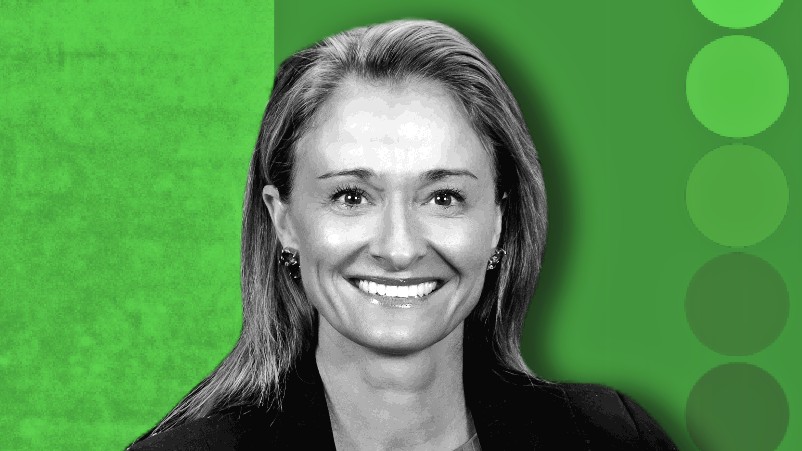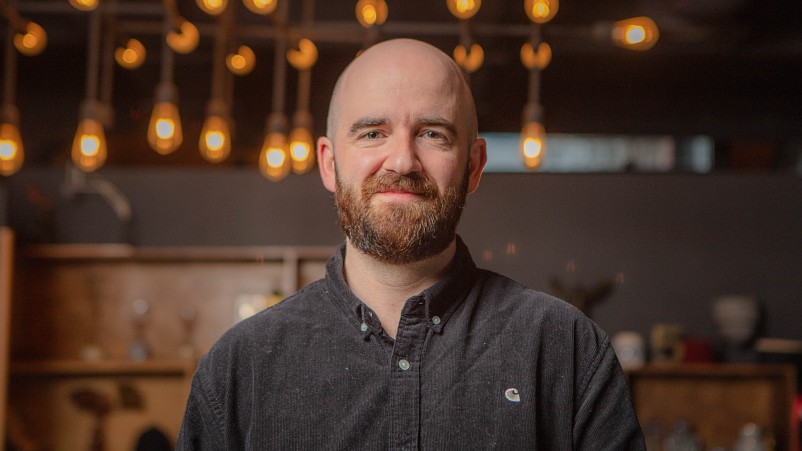Market mix modelling, bold brand bets and AI-powered personalisation at scale: How Domain’s CMO is reeling-in REA as greater firepower blitzes category curve

Rebecca Darley, CMO, Domain: "It’s been an absolute turnaround and we’re only getting started."
Domain CMO, Rebecca Darley, is bullish about the property marketplace’s commercial performance against its larger rival, REA Group, and she has the figures to back her up. While overall category audience growth hit 5 per cent according to Ipsos’ Spring 2023 figures, Domain more than doubled performance against its major competitor, chalking up 10.3 per cent audience growth versus its rival’s 4 per cent. Meanwhile its media business is up 30 per cent this financial year – and Darley's targeting greater gains across utilities, finance and insurance. All of which adds directly to the bottom line for a marketer with an acute commercial focus. From building a proprietary market mix model and trebling internal data, tech and advertising team headcount, to driving dynamic AI-powered personalisation at scale, investing in a big brand platform, and emphasising internal capability, Darley believes she’s found the smarts that deliver results now resonating in the boardroom.
What you need to know:
- Domain CMO, Rebecca Darley, is two years into her plan to transform the property marketplace’s marketing approach through a blend of art and science. And the results are starting to stack up, from quality of audience growth, to 10.3 per cent total audience growth against 5 per cent overall category results recorded by Ipsos.
- The business, majority owned by Nine, more than doubled majority News-owned rival REA's growth curve, per Ipsos' Spring figures.
- Critical to Darley’s approach is heavily investing in internal capability building through centres of excellence, personalisation at scale and a holistic market mix modelling approach that can not only improve marketing KPIs, but directly link marketing’s worth to revenue contribution.
- All this is critical for modern marketers says Darley: “If you can’t answer the questions of marketing’s contribution to ROI, you’re resigned to being a tactical contributor in a business rather than a strategic driver of growth.”
- She hasn’t forgotten about the creative or long-term brand play either. In fact, the data and insight view built internally and the connection of owned, earned and paid programs and insights through unified tech, modelling and reporting smarts is giving Darley the tools to demonstrate the value of investing in a brand platform for the long term.
If you can’t answer the questions of marketing’s contribution to ROI, you’re resigned to being a tactical contributor in a business rather than a strategic driver of growth. That is what the market mix modelling has powered. For every dollar we spend in marketing, I can tell you what’s the return and over what period it’s delivered.
Two years into her tenure as CMO of Domain and Rebecca Darley is “bloody tired actually”. She should be. Her transformative approach to the Domain business, which has had an emphasis on internal capability building and ticks every box you can think of on the modern marketing checklist, is reshaping the way things are done.
And it’s delivered not only category busting growth, but a doubling the ratio of ‘quality’ audiences, defined as those indicating high intent to purchase in the coming 12 months, from 17 per cent to 35 per cent.
“Certainly brand and brand platform is one; quality of audience is another and how we’ve driven that audience; customer is the really big one; then there’s commercialisation and monetisation and how I’ve linked marketing to revenue. Weaved throughout is operational efficiency and effectiveness, and all the work to uplift our martech, adtech and market mix modelling,” Darley tells Mi3.
A two-sided marketplace at heart, with audience on one side and listings on the other. Domain’s volume and scale is substantial – albeit a fair way off Realestate.com.au’s 10m+ users each month. At its peak, Domain has 7.4 million uniques every month, 550,000 listings every year and is supporting 55,000 agents with a resulting 1 billion+ data points. It’s a lot to bring together.
Personalisation at scale
Which is why Darley starts our interview with the platforms, data and capabilities underpinning Domain’s customer and content strategy. She refers to this internally as “personalisation at scale”.
“It’s not marketing tech actually, this is a business tool,” Darley says. “It’s a fundamental shift for many marketers and businesses. We use this very clearly as a business tool across the organisation.”
Domain has overhauled its stack to attain a 360-degree a view of customers and personalise experiences both on web and app plus also off-platforms. At a foundational level, it ditched its data management platform (DMP) 18 months ago and brought on Tealium’s customer data platform (CDP) as well as Braze’s customer engagement platform. Darley’s strategy was very much about introducing best-in-class tech rather than one end-to-end solution, but which would still ensure Domain connected the dots between marketing (martech) and advertising (adtech) activities.
Data is tied together at an individual level then harnessed using AI-powered dynamic segmentation, allowing the team to identify and respond, in a moment, to the journey of the consumer.
“When you’re working across a breadth of property lifecycles, things change and move for consumers. By bringing together activations, channels, leveraging a lot of consumer and customer insight we have and scaling that across product and various interactions we’re seeing, AI has really informed for us… where you are at that point in your property journey in a single moment in time, then marry that richness of experience with it,” Darley says. “That has enabled us to deliver the right service, right product and right experience in that moment, and we’re really starting to see the results of that.”
For example, Domain’s rejuvenated recommended properties personalisation has delivered a 17 per cent increase in listing views, and +20 per cent increase in inquiries.
Thanks to lots of logged-in digital users, Domain has had plenty of first-party data sets to mine. What it’s now done is anchor personalisation in first-party data but layer in off-platform and third-party social and channel insights in a way that also unifies owned, earned and paid activities into one universe.
“That’s a real game changer when you see a lot of businesses and marketing organisations struggling with connection between first and third-party data. These data sets aren’t cannibalising or sitting at odds to one another; the two act in a complementary way. That’s the part we have been able to understand and power in this model,” Darley says.
“It’s the sophistication we’re all striving for, particularly in a world where there’s so much change coming our way, and nothing is standing still. AI, cookie deprecation, privacy legislation are seismic shifts and marketers are sitting at the heart of that. How are we embracing it with optimism and bringing this disparity together to drive real business performance is critical. If you don’t, you’ll be left behind.”
Crucially, where Darley sees this delivering is against Domain’s efforts to balance audience growth with quality of audience. It’s why she’s so proud of the fact the marketplace has grown its quality of audience ratio to 35 per cent, up 176 per cent in the last three years.
I threw a lot of traditional brand cues out the window; I didn’t force green into everything and I’m sure Mark Ritson would probably have a heart attack ... This for us is about fighting short-termism and playing the long game. So moving up that funnel has been critical. And it’s paid dividends for us in those results.
Big creative bets – and the power of market mix modelling
Then there’s the fusion of art and science seen in Darley’s longer-term brand bets and shift up the funnel. Six months ago, Domain launched a new brand platform, ‘Know what we know’, underpinned by proprietary market mix modelling.
“We were never going to win by playing the same game: We have a major competitor outspending us 2:1. We needed to shift from a very tactical, rational focus to long-term brand building. We also needed to become really clear on who we are speaking to, what we stand for and deliver that with personality,” Darley explains.
A desire to challenge category conventions lies at the heart of Domain’s creative brand approach for Darley. The choice of talent in its advertising is one example: Rose Byrne and her partner, Bobby Carnivale are designed to deliver humour and mainstream Aussie appeal. The second decision was to purposefully not set any ads in the home and instead use sites such as a gym and suburban street.
“I threw a lot of traditional brand cues out the window; I didn’t force green into everything and I’m sure Mark Ritson would probably have a heart attack. We brought it to life in a fun, human way,” Darley says. “Buying a house is hard and it’s more competitive than ever. This for us is about fighting short-termism and playing the long game. So moving up that funnel has been critical. And it’s paid dividends for us in those results.”
Market mix modelling can be thanked for helping the team understand where to play and how to win, Darley continues.
“The results in audience growth have been a mix of taking the big bets with our brand, moving up the funnel and the big bet on talent, as well as ensuring we’re underpinned by science and rigour,” she says. “The market mix model has been a new superpower for our business, guiding executive-level decision making on optimal marketing investment to drive commercial impact. It’s become that source of truth.”
As a proudly commercial marketer, Darley believes the modern marketer in any Australian business, and especially an ASX-listed one, must connect their activities directly to revenue and the bottom line. Domain’s model recalibrates biannually so it remains a compounding and cumulative approach in terms of effects marketing delivers.
“If you can’t answer the questions of marketing’s contribution to ROI, you’re resigned to being a tactical contributor in a business rather than a strategic driver of growth,” Darley warns. “That is what the market mix modelling has powered. I can tell you what marketing’s contribution to revenue is for our business and I can tell you the return. For every dollar we spend in marketing, what’s the return and over what period it’s delivered.”
The proof is in the Ipsos Spring pudding and those audience results. Darley says Domain is looking at both short and long-term commercial outcomes; identifying the optimal mix; plus the right allocation across resources, spend levels and selected geographies.
“We can do a lot of that in real time now so it’s a live, dynamic model. Because we have a number of live feeds coming through for our content, digital, remarketing plus predicted impact of a lot of live feed channels on a daily basis, it’s allowing us to drive that action and response time like we never have before,” Darley says.
As a marketer with more than 20 years’ experience, it’s good to know what the science is showing isn’t a complete surprise. “But it certainly gave me the level of science to the inherent gut feel and experience,” Darley says. “It gave me the science to have the conversations in the boardroom, and quantify the impact of moving up the funnel.
“It’s not just about bottom funnel activity contribution – that’s incredibly important. But it’s also about what top-of-funnel is doing to influence and drive bottom of funnel. That connection point has been incredibly valuable to quantify.”
There are only a small proportion of consumers active in the moment to buy a property. It’s about how you build and scale that lifetime value of consumers, knowing where they are at certain points, and knowing how to optimise for that. If you’re only looking at the paid channels, you’re missing the value and richness of what the owned and earned landscape adds into your overall marketing mix.
The value of owned and earned
What modelling further demonstrated is the value of Domain’s owned and earned channels. Market mix modelling is being used to measure the impact of paid, owned and earned media alongside product, web and app changes right through the customer journey.
“There are only a small proportion of consumers active in the moment to buy a property. It’s about how are you starting to build and scale that lifetime value of consumers, knowing where they are at certain points, and knowing how to optimise for that,” Darley says. “If you’re only looking at the paid channels, you’re missing the value and richness of what the owned and earned landscape adds into your overall marketing mix.
“Owned and earned came out incredibly strongly. When you consider we operate a full team of journalists in-house – I have journalists in Domain plus [others] based in the newsroom at Nine – being able to quantify the value they add alongside our broader content and PR teams has really paved the way for the marketing mix of the future.”
The paid, owned, earned split looks quite different now, although Darley won’t give specific breakdowns apart from saying it’s “strengthened owned and earned investment”.
A CMO who firmly believes in the value of internal capability building, Darley has also increased personalisation headcount by 375 per cent in two years. The shift from generalists to cross-functional centres of excellence has seen her also bring in more data professionals, operations specialists and dedicated technologists.
“We did seek third-party support and endorsement, but the intent was never to outsource this because it does sit at the heart of what we are doing. I want those capabilities to be firmly centred in our marketing organisation,” Darley comments. Equally, she’s bolstered content, digital, programmatic and adtech teams and runs a trading desk as part of the in-house capability overhaul.
Agency partners nevertheless remain important, says Darley. Last year, Domain appointed Howatson & Co to lead brand strategy work, while retaining PHD from a traditional media buying perspective alongside House of Brand for research. But marketing smarts are very much an in-house model for Darley and all market mix modelling is owned and proprietary. The advantage it gives includes the speed and understanding of customer sets, she adds.
Domain Media business
While core listings remain the larger part of Domain’s business, it is building other product streams. Domain’s media business, under Darley’s remit, is one – and she has completely shifted the strategy, this time from largely commercialising ad units on the site, to looking at deeper partnerships and integrations across key verticals. So far this financial year, it’s delivered 30 per cent growth.
An illustration of this change in partnership is with NBN, which now has deep integrations across all Domain property listings via live API feed.
“The value to the consumer is if you’re looking at a property, you can now determine if it’s NBN-enabled, what’s the speed,” she says. “We’ll look to scale a number of those – utilities, finance and insurance are the key categories there.”
Next cabs off the rank
The focus now is continued momentum and acceleration. “We have the ingredients, so it’s continuing to test, learn, optimise and iterate. We have built these centres of excellence; how do we now start to scale and drive that forward and continue to deliver and demonstrate the value,” Darley says.
“The secret sauce is the combination of on and off platform; the relative weighting of those; frequency and optimisation. There is such sophistication to it. With our AI segmentation model, we test and learn on that as well and we don’t always get that right. Importantly, it’s about understanding when you don’t get it right so you can be recalibrating your model and constantly learning.”
Through Darley’s example, it’s easy to see how much the game has changed for marketers.
“Positioning marketing as a business growth driver is precisely what we need to be doing,” she says. “You have to be able to answer these questions: What is marketing’s contribution to revenue? For every dollar you’re spending in marketing, what’s the return? I’ve strived to do that for a long time across a number of businesses. We have certainly been able to cement that here at Domain.
“I’m so proud of what we have done in the last two years – I’m bloody tired. It’s been an absolute turnaround and we’re only getting started.”



